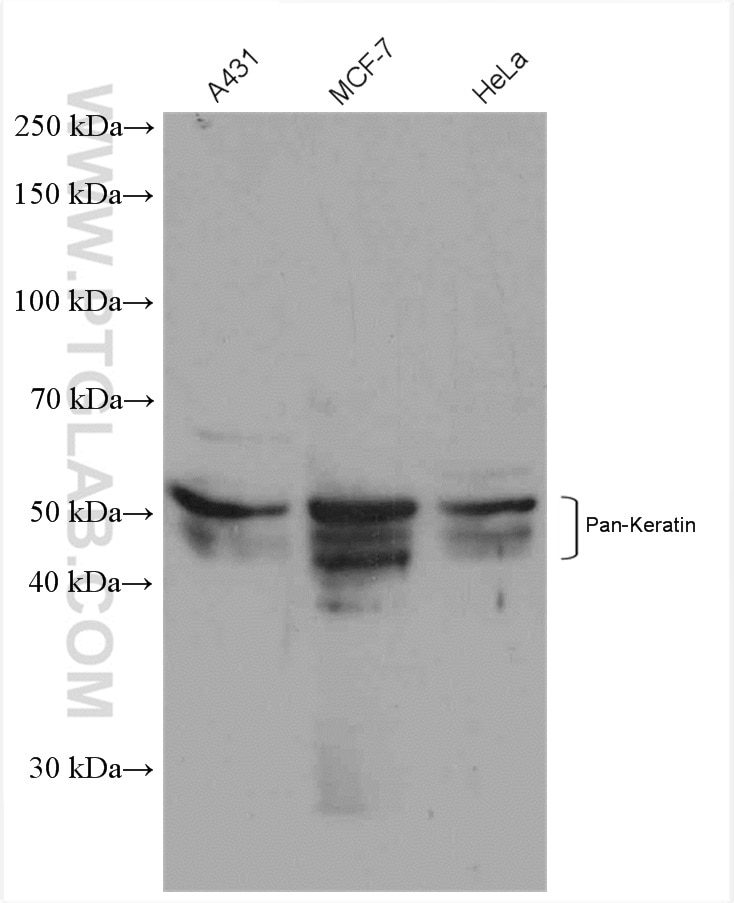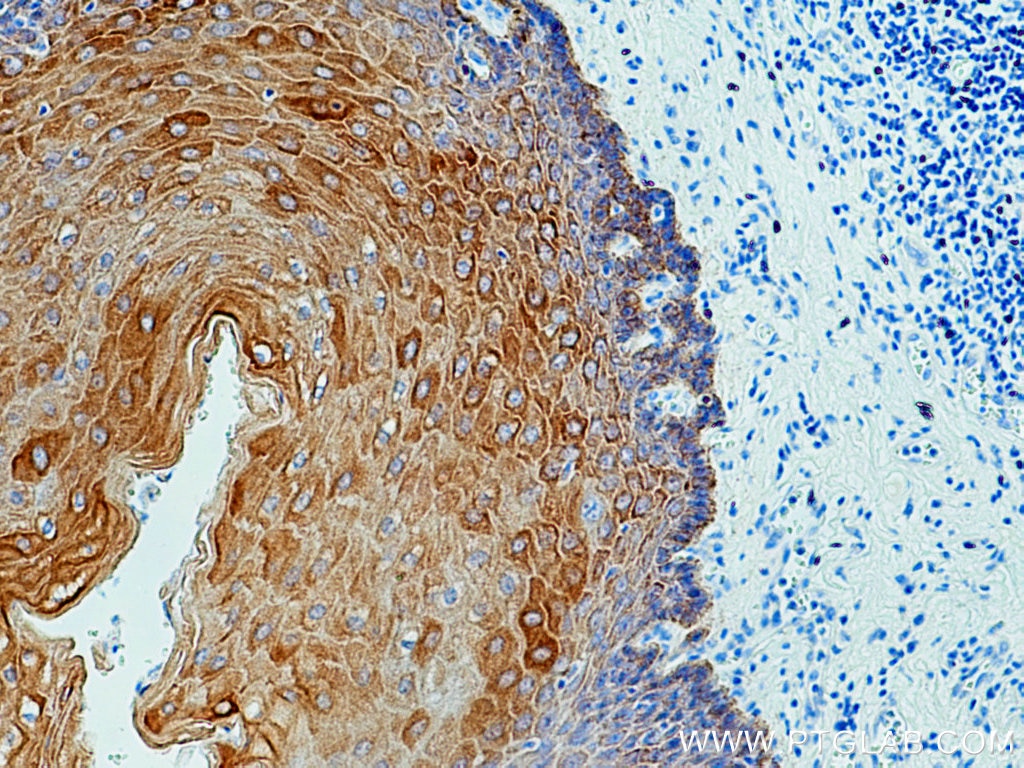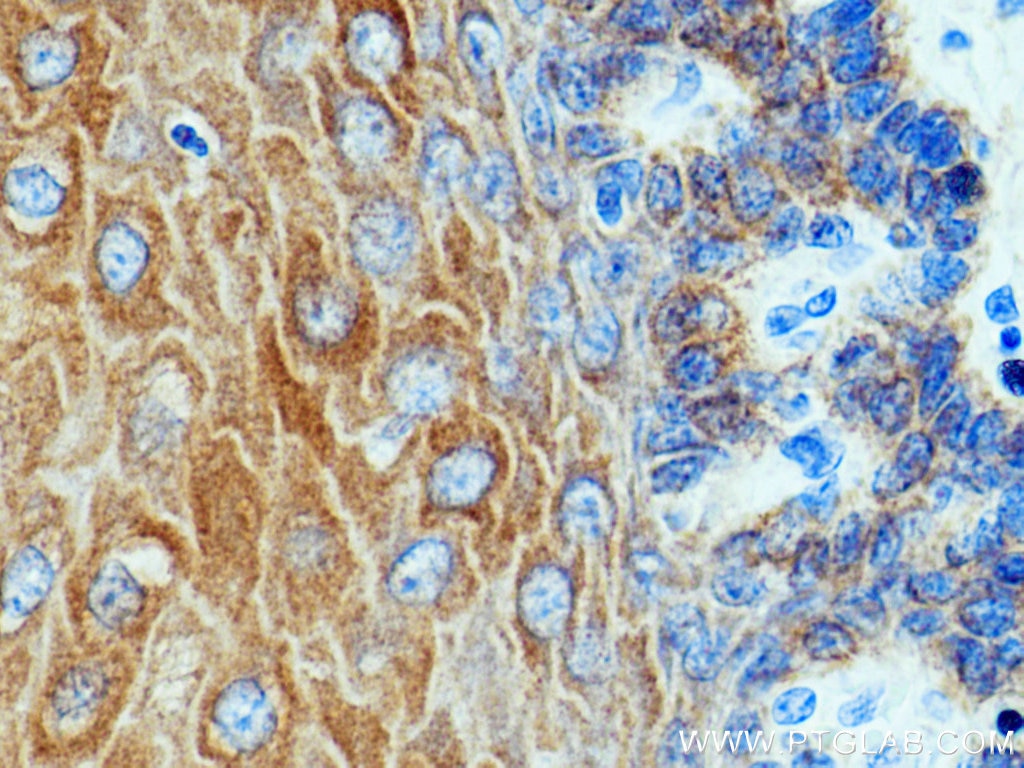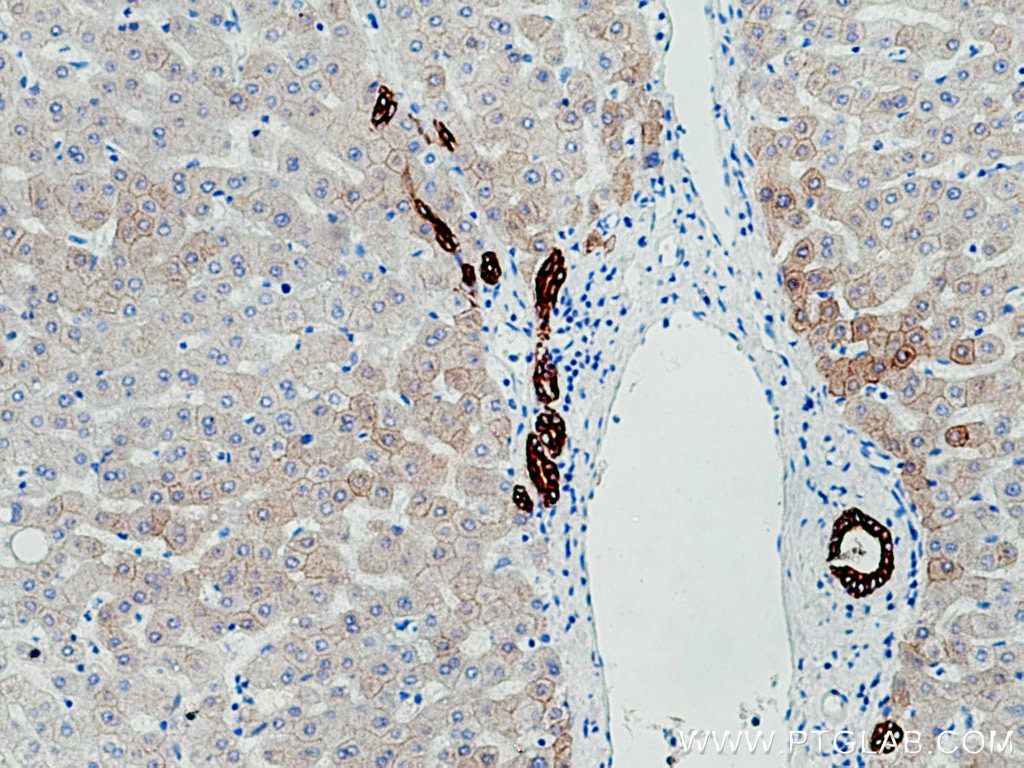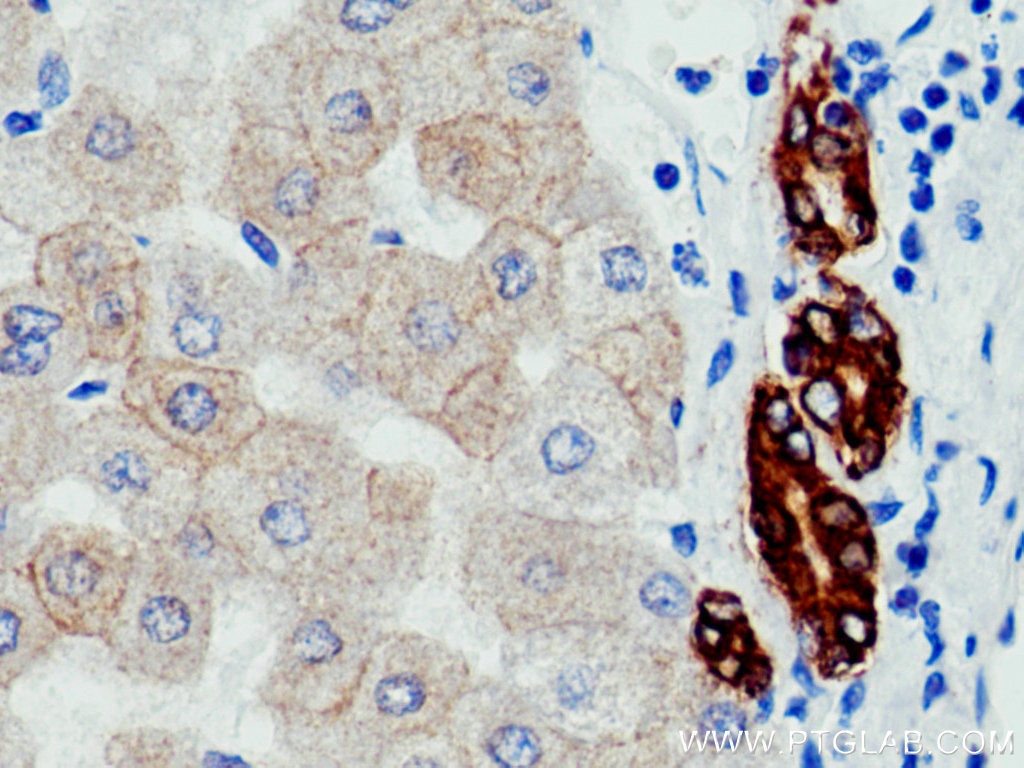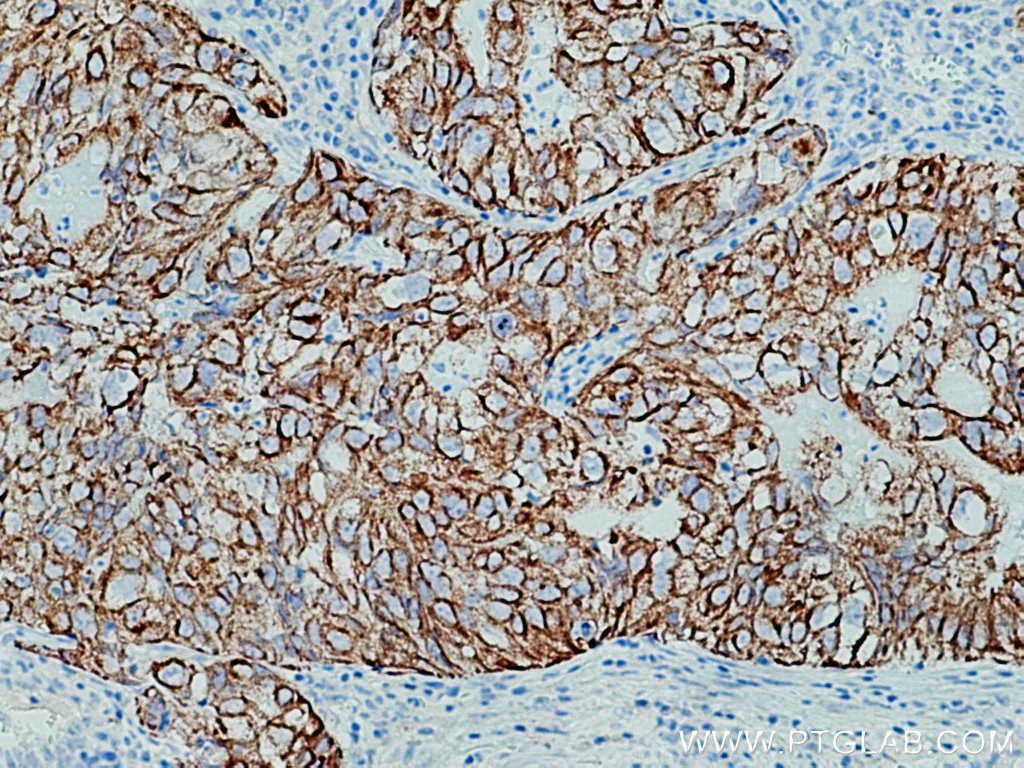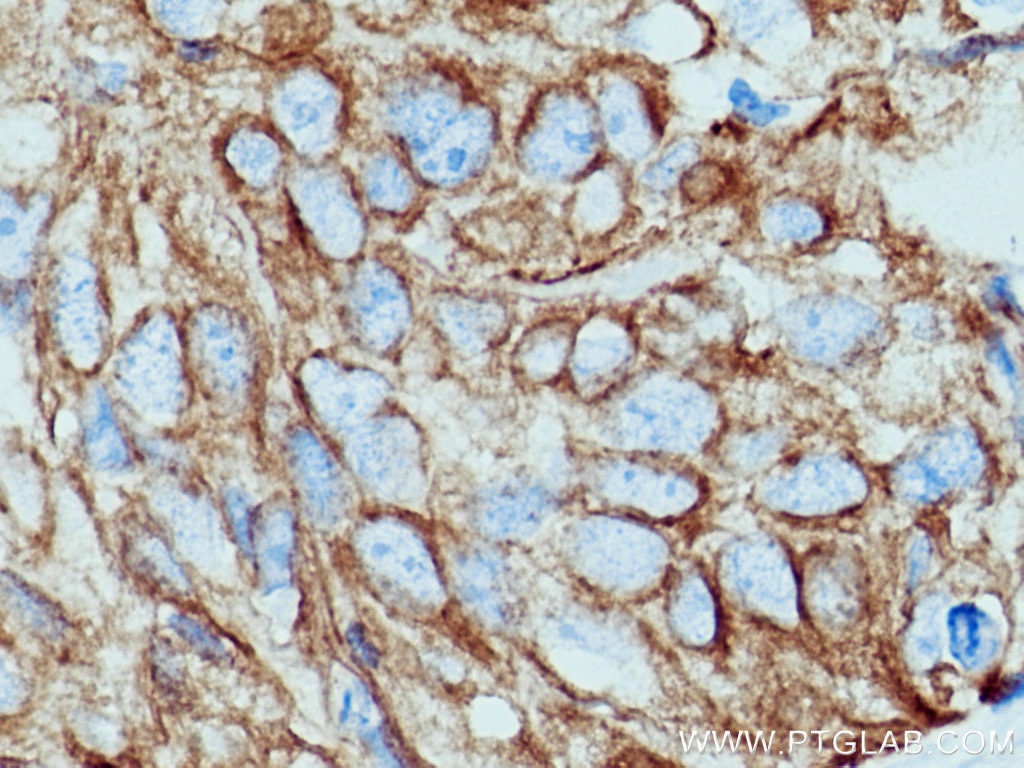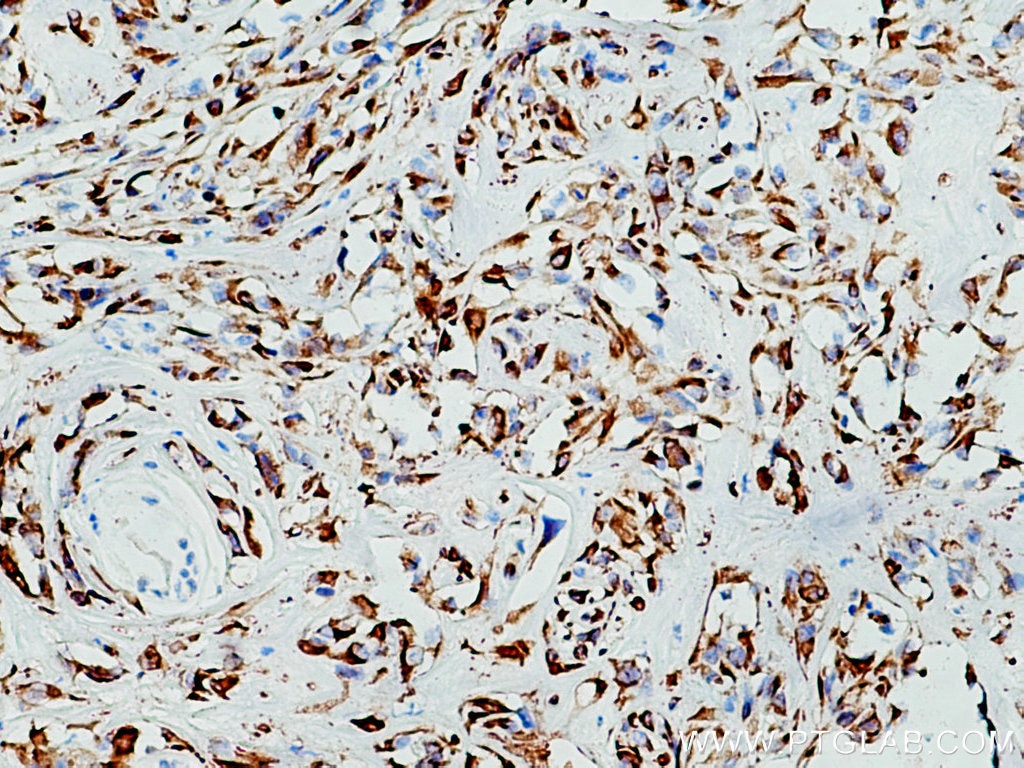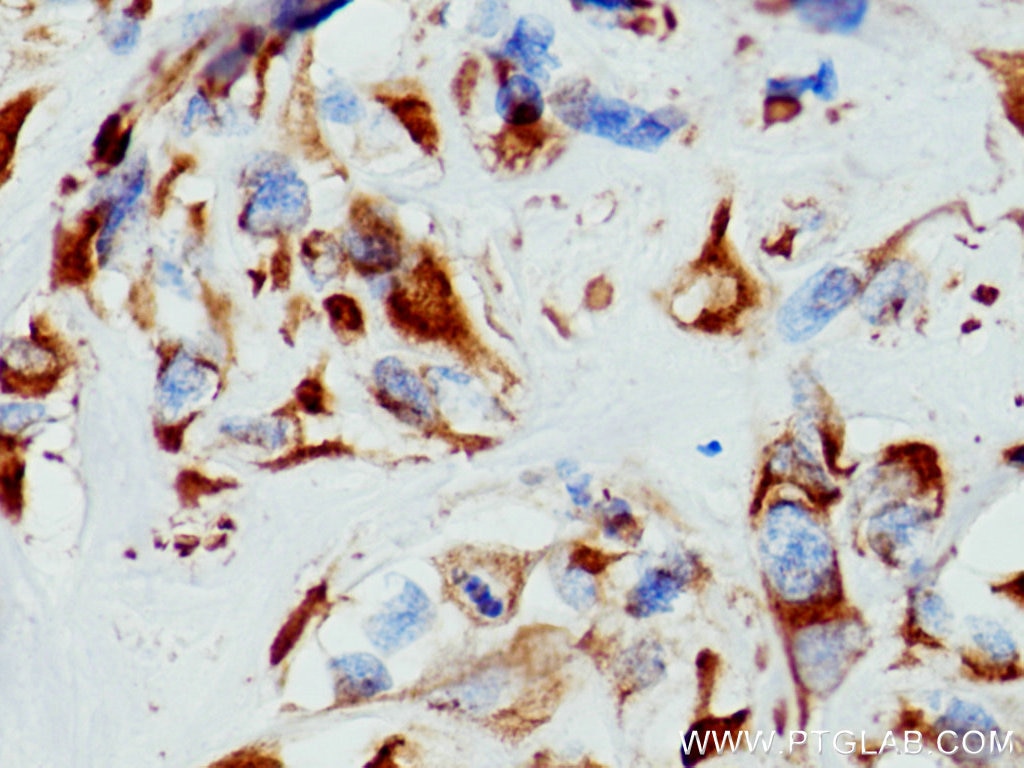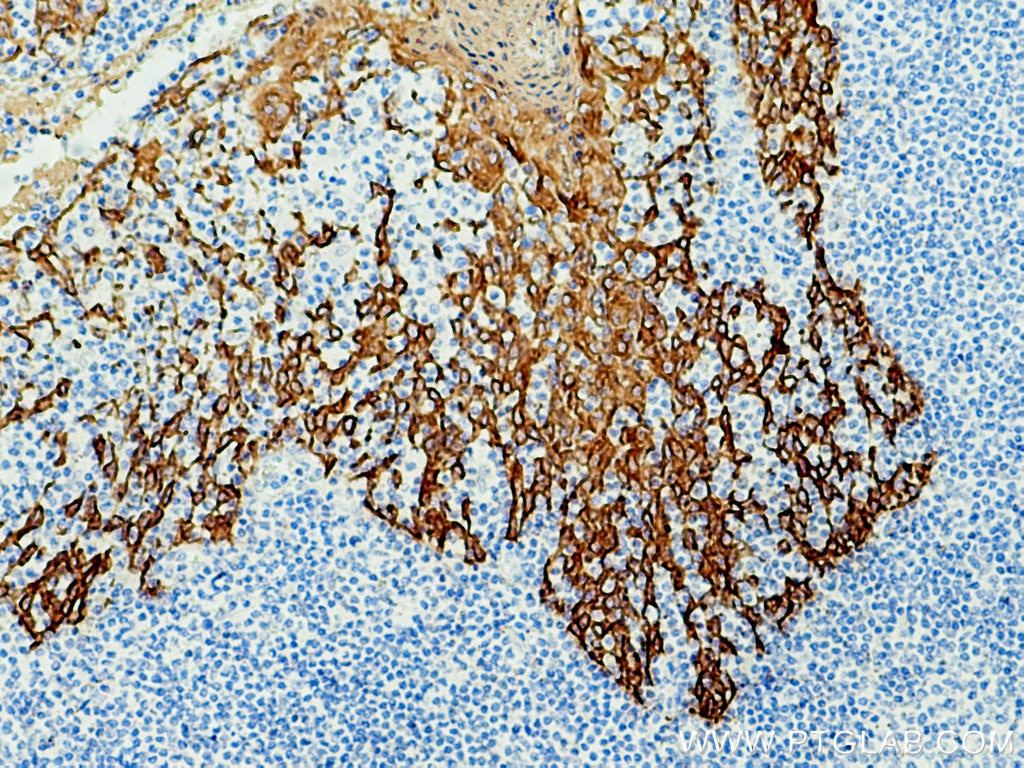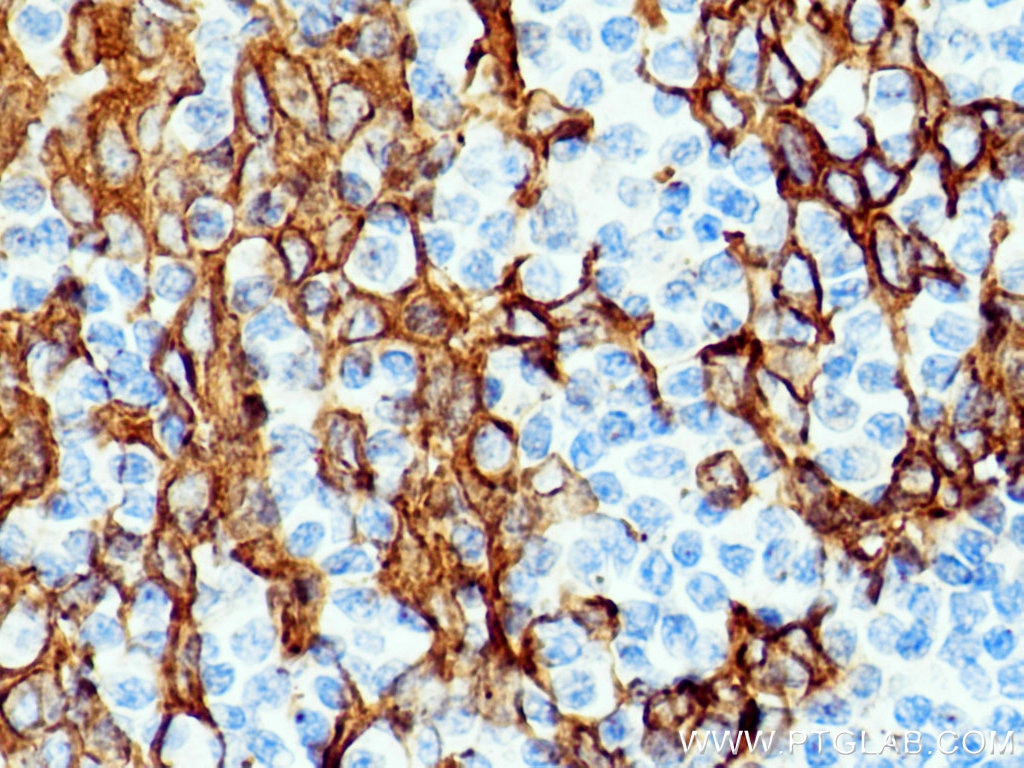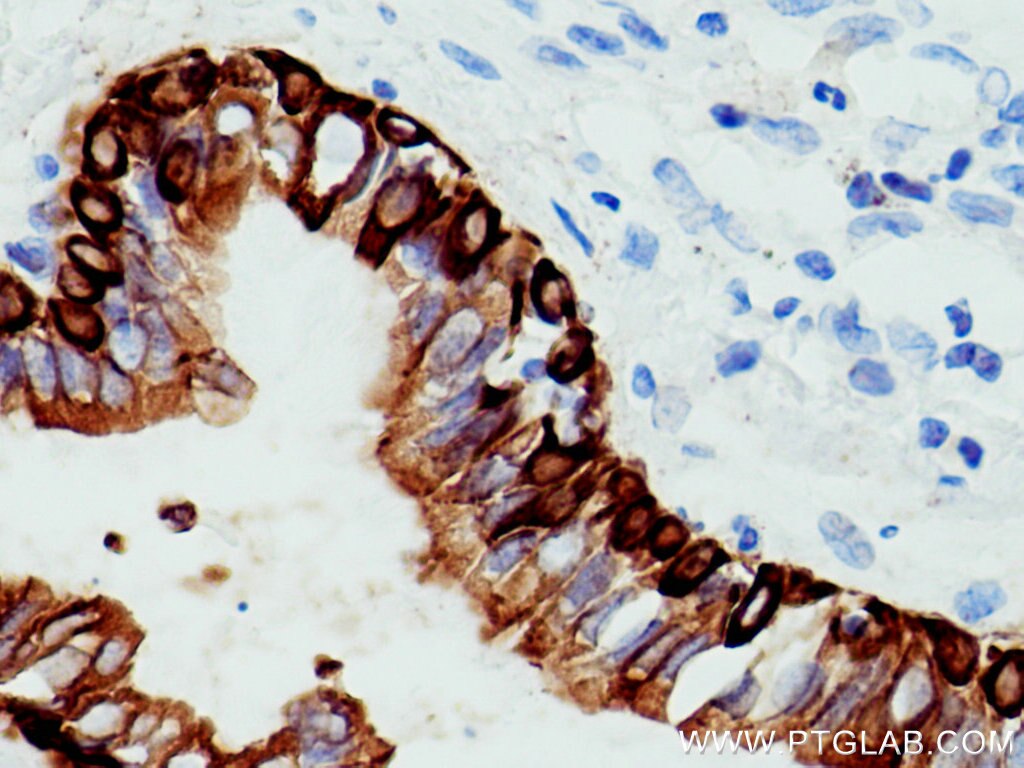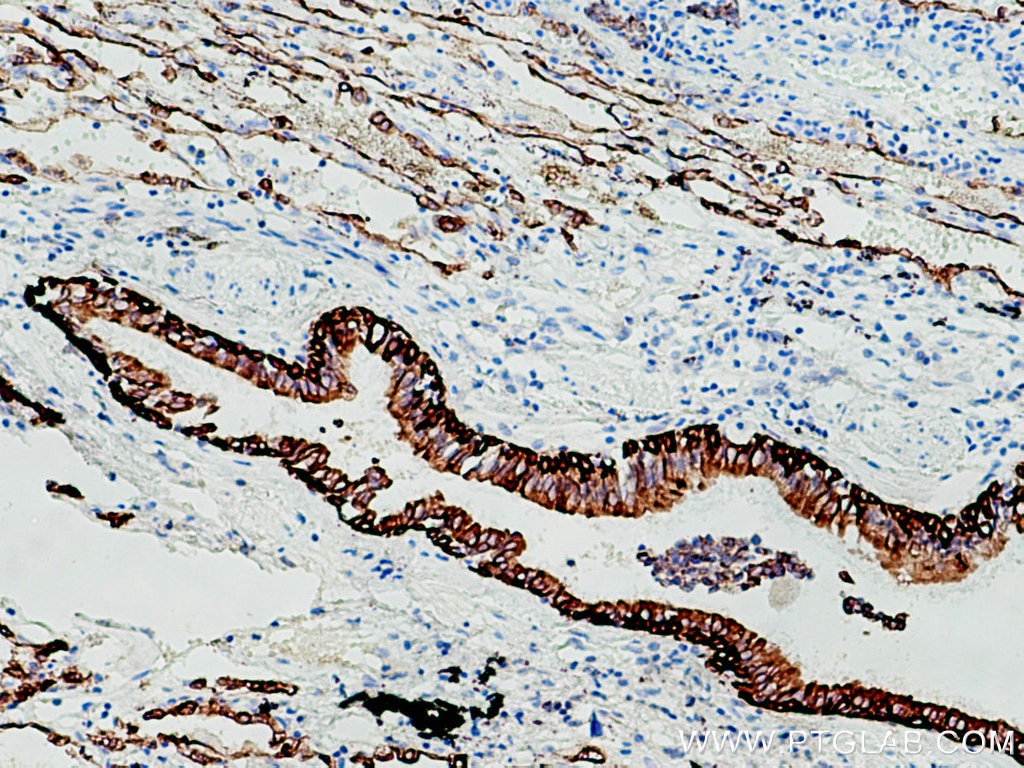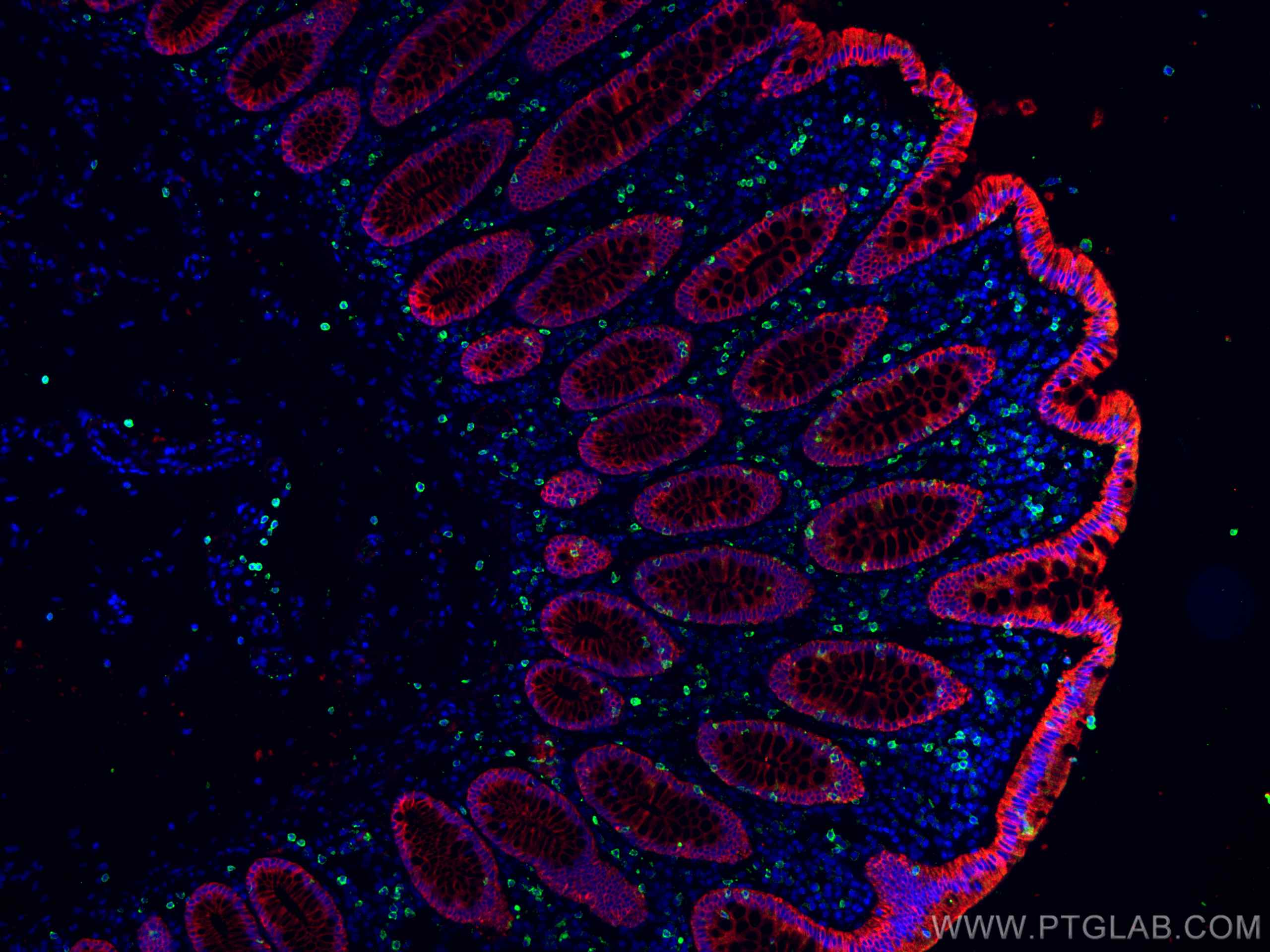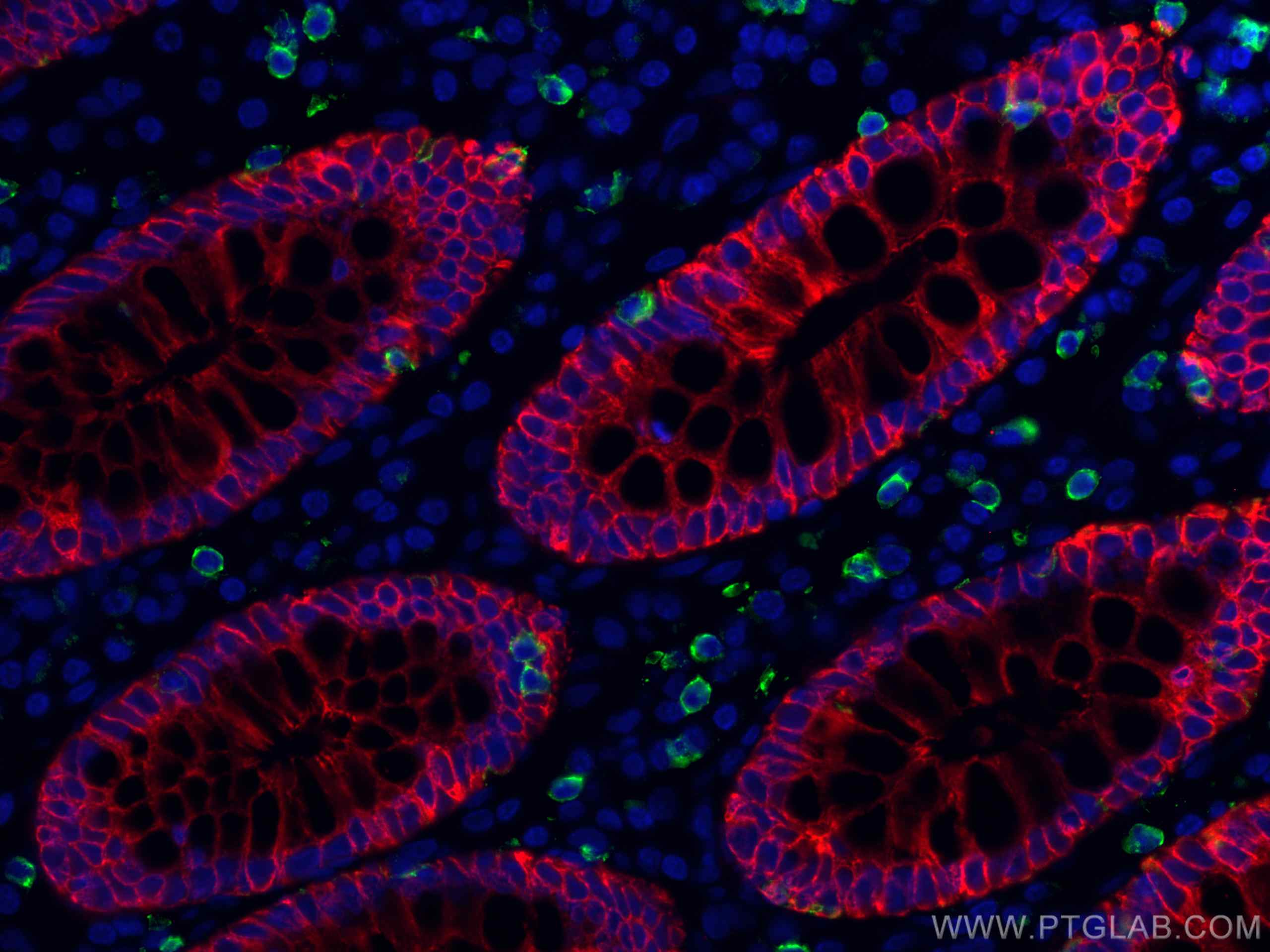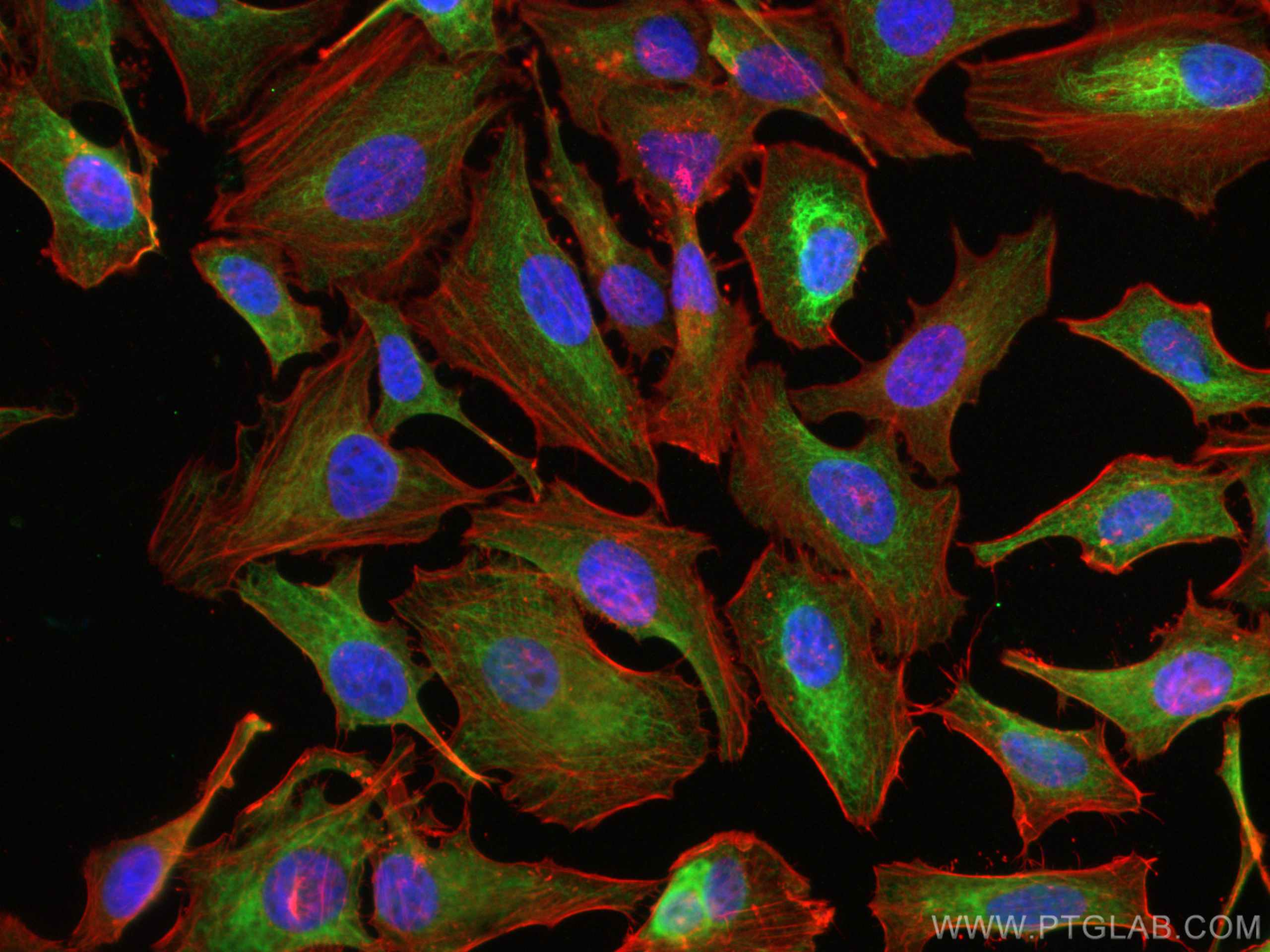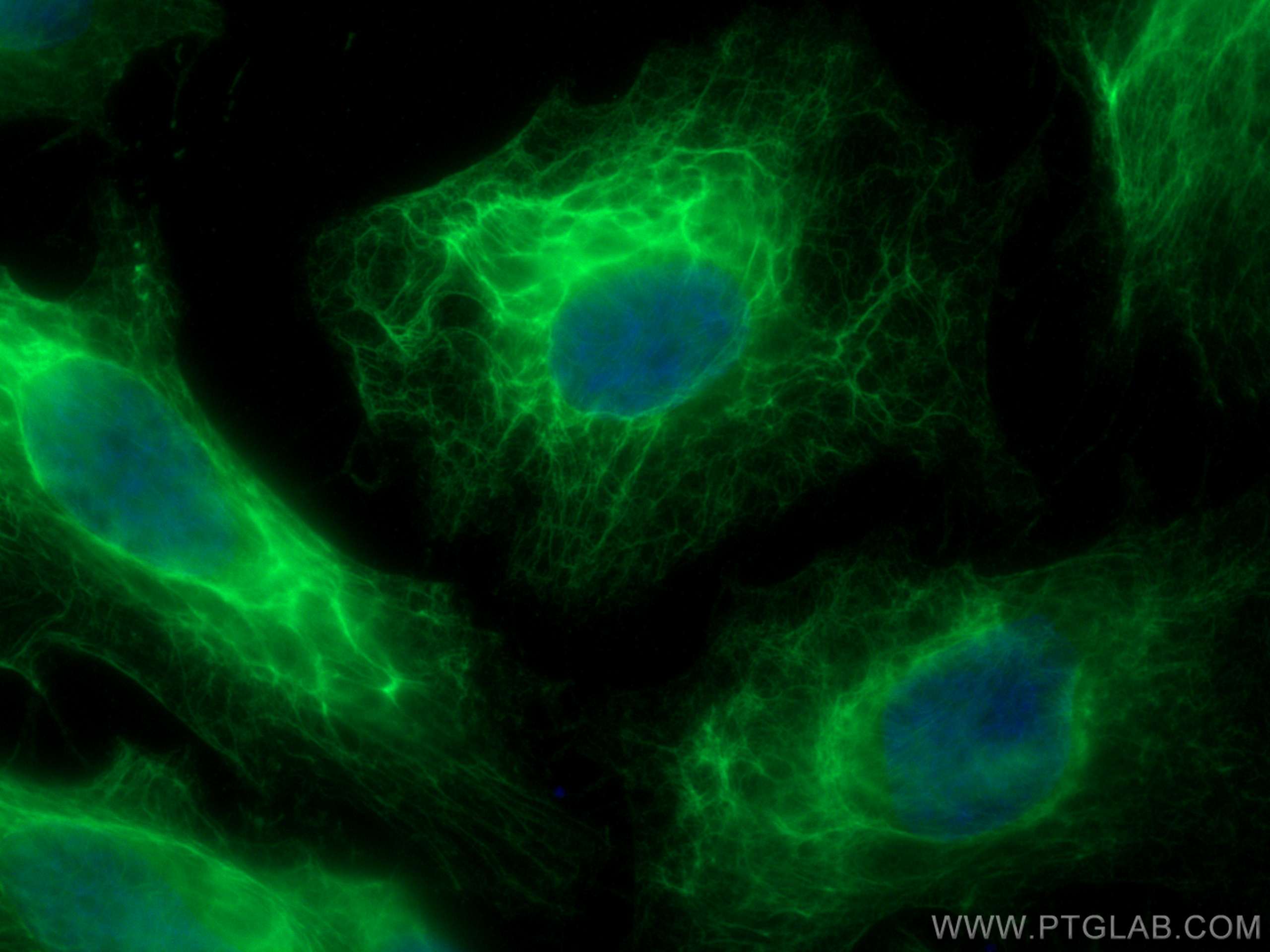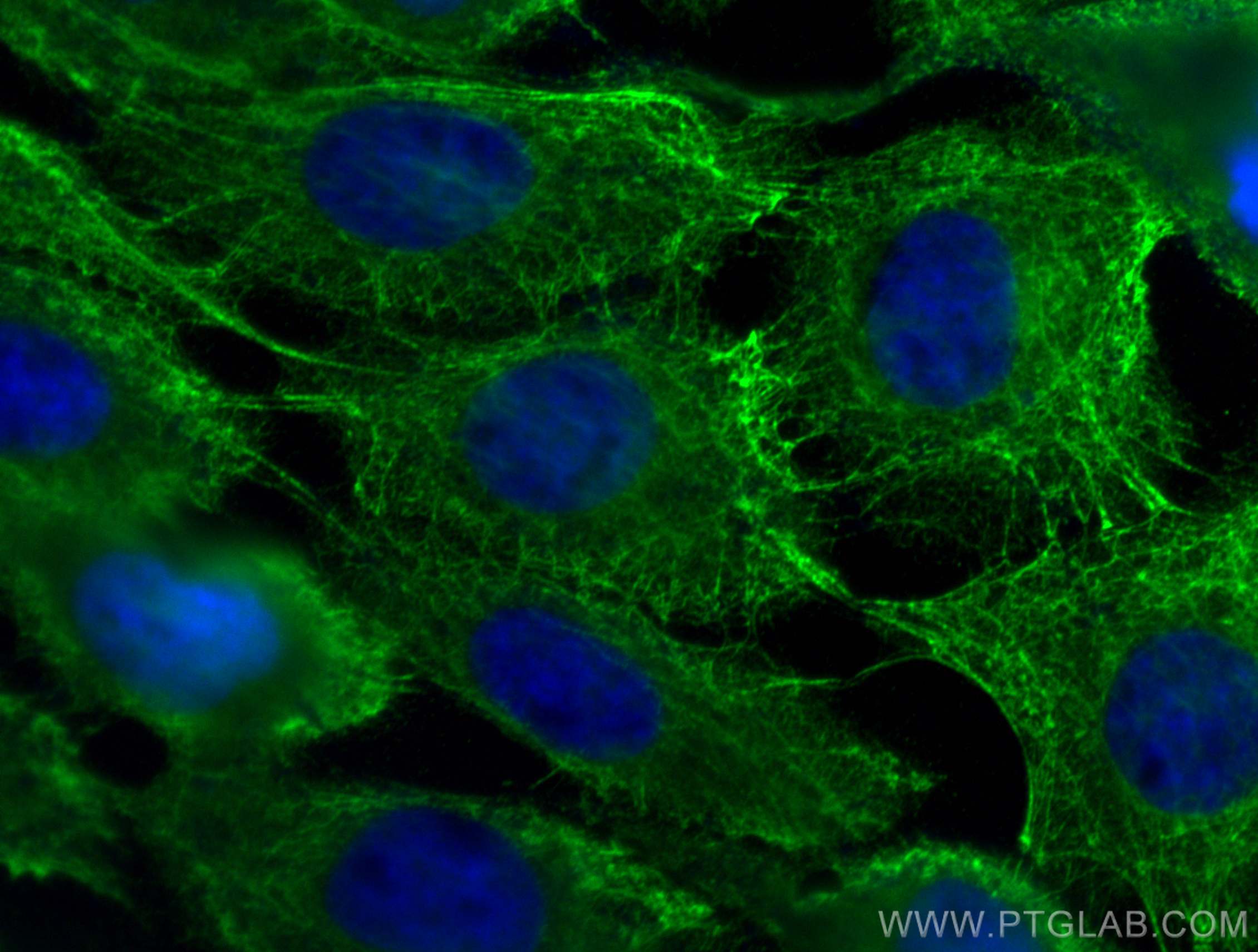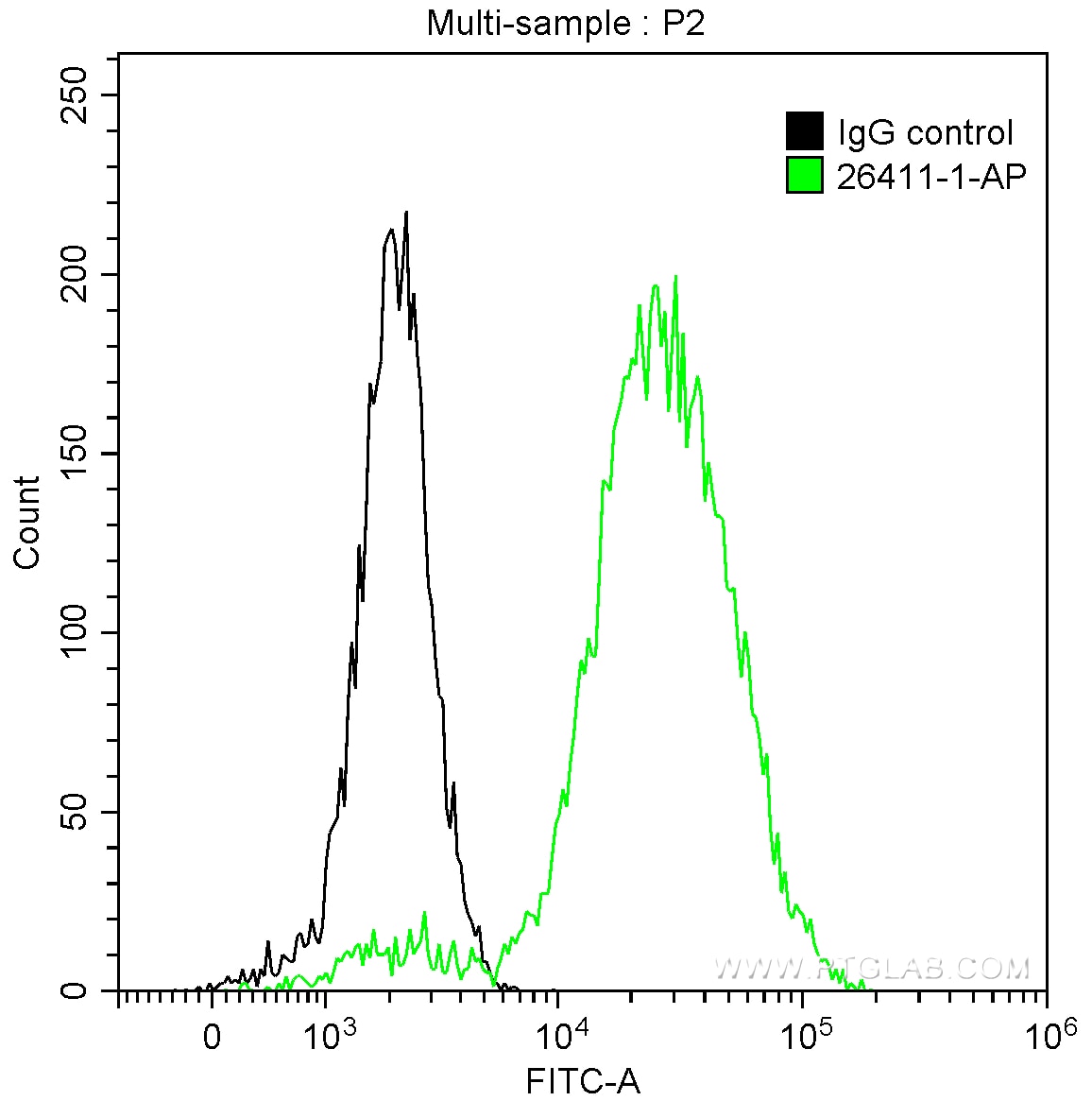pan-keratin Polyklonaler Antikörper
pan-keratin Polyklonal Antikörper für FC, IF, IHC, WB, ELISA
Wirt / Isotyp
Kaninchen / IgG
Getestete Reaktivität
human und mehr (2)
Anwendung
WB, IHC, IF, FC, ELISA
Konjugation
Unkonjugiert
Kat-Nr. : 26411-1-AP
Synonyme
Galerie der Validierungsdaten
Geprüfte Anwendungen
| Erfolgreiche Detektion in WB | A431-Zellen, HeLa-Zellen, MCF-7-Zellen |
| Erfolgreiche Detektion in IHC | humanes Ösophagusgewebe, humanes Lebergewebe, humanes Lungenkarzinomgewebe, humanes Nierenzellkarzinomgewebe, humanes Tonsillitisgewebe Hinweis: Antigendemaskierung mit TE-Puffer pH 9,0 empfohlen. (*) Wahlweise kann die Antigendemaskierung auch mit Citratpuffer pH 6,0 erfolgen. |
| Erfolgreiche Detektion in IF | humanes Kolonkarzinomgewebe, A431-Zellen, HeLa-Zellen |
| Erfolgreiche Detektion in FC | A431-Zellen |
Empfohlene Verdünnung
| Anwendung | Verdünnung |
|---|---|
| Western Blot (WB) | WB : 1:50000-1:200000 |
| Immunhistochemie (IHC) | IHC : 1:1500-1:6000 |
| Immunfluoreszenz (IF) | IF : 1:200-1:800 |
| Durchflusszytometrie (FC) | FC : 0.20 ug per 10^6 cells in a 100 µl suspension |
| It is recommended that this reagent should be titrated in each testing system to obtain optimal results. | |
| Sample-dependent, check data in validation data gallery | |
Veröffentlichte Anwendungen
| WB | See 3 publications below |
| IHC | See 12 publications below |
| IF | See 10 publications below |
Produktinformation
26411-1-AP bindet in WB, IHC, IF, FC, ELISA pan-keratin und zeigt Reaktivität mit human
| Getestete Reaktivität | human |
| In Publikationen genannte Reaktivität | human, Maus, Ratte |
| Wirt / Isotyp | Kaninchen / IgG |
| Klonalität | Polyklonal |
| Typ | Antikörper |
| Immunogen | pan-keratin fusion protein Ag24184 |
| Vollständiger Name | keratin 5 |
| Berechnetes Molekulargewicht | 590 aa, 62 kDa |
| Beobachtetes Molekulargewicht | 46-58 kDa |
| GenBank-Zugangsnummer | BC024292 |
| Gene symbol | KRT5 |
| Gene ID (NCBI) | 3852 |
| Konjugation | Unkonjugiert |
| Form | Liquid |
| Reinigungsmethode | Antigen-Affinitätsreinigung |
| Lagerungspuffer | PBS mit 0.02% Natriumazid und 50% Glycerin pH 7.3. |
| Lagerungsbedingungen | Bei -20°C lagern. Nach dem Versand ein Jahr lang stabil Aliquotieren ist bei -20oC Lagerung nicht notwendig. 20ul Größen enthalten 0,1% BSA. |
Hintergrundinformationen
Keratins are a large family of proteins that form the intermediate filament cytoskeleton of epithelial cells, which are classified into two major sequence types. Type I keratins are a group of acidic intermediate filament proteins, including K9-K23, and the hair keratins Ha1-Ha8. Type II keratins are the basic or neutral courterparts to the acidic type I keratins, including K1-K8, and the hair keratins, Hb1-Hb6. Keratin isoforms demonstrate tissue- and differentiation-specific profiles that make them useful as research biomarkers. Research studies have shown that mutations in keratin genes are associated with skin disorders, liver and pancreatic diseases, and inflammatory intestinal diseases. This antibody is a pan-keratin antibody.
Protokolle
| Produktspezifische Protokolle | |
|---|---|
| WB protocol for pan-keratin antibody 26411-1-AP | Protokoll herunterladen |
| IHC protocol for pan-keratin antibody 26411-1-AP | Protokoll herunterladen |
| IF protocol for pan-keratin antibody 26411-1-AP | Protokoll herunterladen |
| Standard-Protokolle | |
|---|---|
| Klicken Sie hier, um unsere Standardprotokolle anzuzeigen |
Publikationen
| Species | Application | Title |
|---|---|---|
Biomaterials Heterotypic 3D pancreatic cancer model with tunable proportion of fibrotic elements. | ||
Biomaterials MSC-derived exosomes protect against oxidative stress-induced skin injury via adaptive regulation of the NRF2 defense system. | ||
Oncogene The keratin 17/YAP/IL6 axis contributes to E-cadherin loss and aggressiveness of diffuse gastric cancer | ||
Oncogene USP13 promotes development and metastasis of high-grade serous ovarian carcinoma in a novel mouse model. | ||
Front Cell Dev Biol Preclinical Application of Conditional Reprogramming Culture System for Laryngeal and Hypopharyngeal Carcinoma | ||
J Cancer Res Clin Oncol B7-H3 and CD47 co-expression in gastric cancer is a predictor of poor prognosis and potential targets for future dual-targeting immunotherapy |
